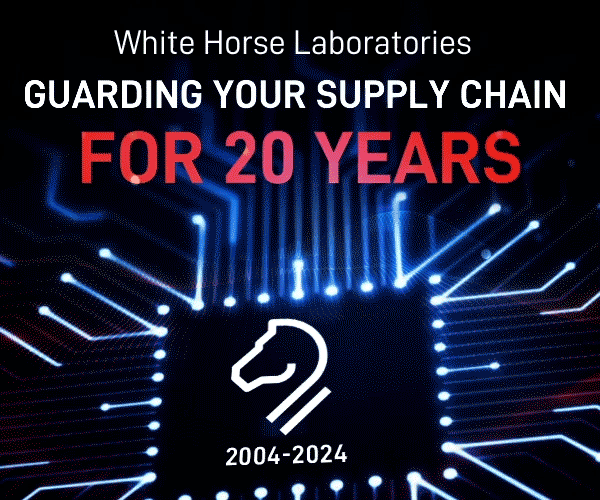Yesterday, Today, and Tomorrow: Why Manufacturing Is Every Nation’s Future
By Amar Hanspal, Chief Executive Officer, Bright Machines
Throughout most of the 20th century, manufacturing seemed like the most exciting industry that would define the future. Manufacturers created new mindsets and approaches to making things, from the first cars to the modern robots.
In the past few decades though, the manufacturing industry has lost some of its luster and job growth has yet to recover to pre-pandemic levels. In March 2011, Senator John D. Rockefeller IV shared a sobering reminder that, “This country cannot subsist as a service economy. We will not thrive as a nation if we do not make things.” Many today view manufacturing as a risk-averse, mind-numbing activity where nothing meaningful happens.
This is far from true—manufacturing remains exciting, and new innovations highlight its increasing importance.
Making what matters
From Blue Origin spacecraft to Tesla vehicles, none of today’s most exciting innovations could exist without manufacturing. Much more than just churning out pieces in a factory, the industry is helping break new ground around transportation and exploration.
Manufacturing is also tackling the most pressing issue of our time, such as climate change, by turning sustainability ideas into physical objects.
The latest innovation in manufacturing is the software revolution finding its place on the factory floor. Up until now, software has powered manufacturers’ design, engineering, financial, and supply chain operations. However, it has had a limited impact on the physical means of making products. Today, software oversees the hardware you find in a factory, allowing machines and robots to do more of the repetitive work currently done by humans. This software-first approach to manufacturing enables companies to create a fully functional assembly line near the people who need the product, which helps cut down on long supply chains that contribute to pollution.
Local production improves how frequently companies build the type of products their customers want or need for a given market. When manufacturing is more local, workers understand their close-to-home markets and can nimbly adjust to regional tastes and needs. These rapid, on-demand adjustments suddenly are much easier to make when software oversees hardware. This also helps reduce climate change-causing pollution, since there won’t be a situation where products cross the ocean on a container ship and are thrown out when no longer needed.
It’s clear that manufacturing is cool based only on how it tackles big global problems. There’s more in the corner, though, as even the daily work of manufacturing itself is being reimagined.
The hidden side of manufacturing jobs
People who like creative problem-solving don’t often think first about a career in manufacturing. They should though, as the next generation of workers in the industry won’t be performing repetitive tasks, like turning a screw or hammering a panel for hours on end.
The industrial automation that began in the 20th century has moved to a new level in the 21st century through software-first manufacturing, allowing machines to handle these repetitive duties. In the past, many assembly and inspection steps were too difficult for machines to carry out. Now, with software overseeing hardware, the possibilities have expanded, even with complex product categories like electronics.
While machines do what they’re good at, humans working in the factory are freed to do the things that they’re good at and uniquely qualified to handle. They can employ their creativity and problem-solving skills to come up with innovations to process or product development. They can spend their days asking if there’s a better way to do something, work on those solutions, and see the fruits of their labor at the end of the process.
One advantage that humans have over machines is possessing empathy – a quality that they can use when providing customer service. There will be a growing number of customer-facing manufacturing jobs that need creative and empathetic individuals looking to solve whatever problem stands in the way of customer success.
Don’t forget that modern manufacturing is filled with robots and someone must tell the robots what to do and train them on how to do their job. As a result, many manufacturing jobs will be for people who work with the robots to make sure they are efficiently carrying out the manufacturing tasks they’ve been programmed to carry out.
If we look at other industries, there are historical parallels. For instance, computer-aided design didn’t make architects or designers obsolete – it just automated portions of their job, so they could devote more of their brainpower to coming up with creative solutions. The same trend is happening in manufacturing today.
Automation solutions provide a new way to build things, and allow people to use the skills of creativity, empathy, innovation, and problem-solving, which many find exciting in a career.
The opportunity now
Deloitte recently did a study which revealed that manufacturers in the United States need to fill 4 million jobs by 2030 – and more than half of those jobs could go unfilled because of several main culprits, such as the antiquated image of modern manufacturing.
The industry recently celebrated Manufacturing Day, which aims to support the manufacturing industry’s skilled workers and encourage growth. Now is the perfect time to get rid of outdated perceptions and realize that manufacturing is evolving in exciting new ways and enjoying a fresh injection of capital from both the private and public sector. Manufacturing is certifiably not only a cool place to work, it is the future of every nation.













